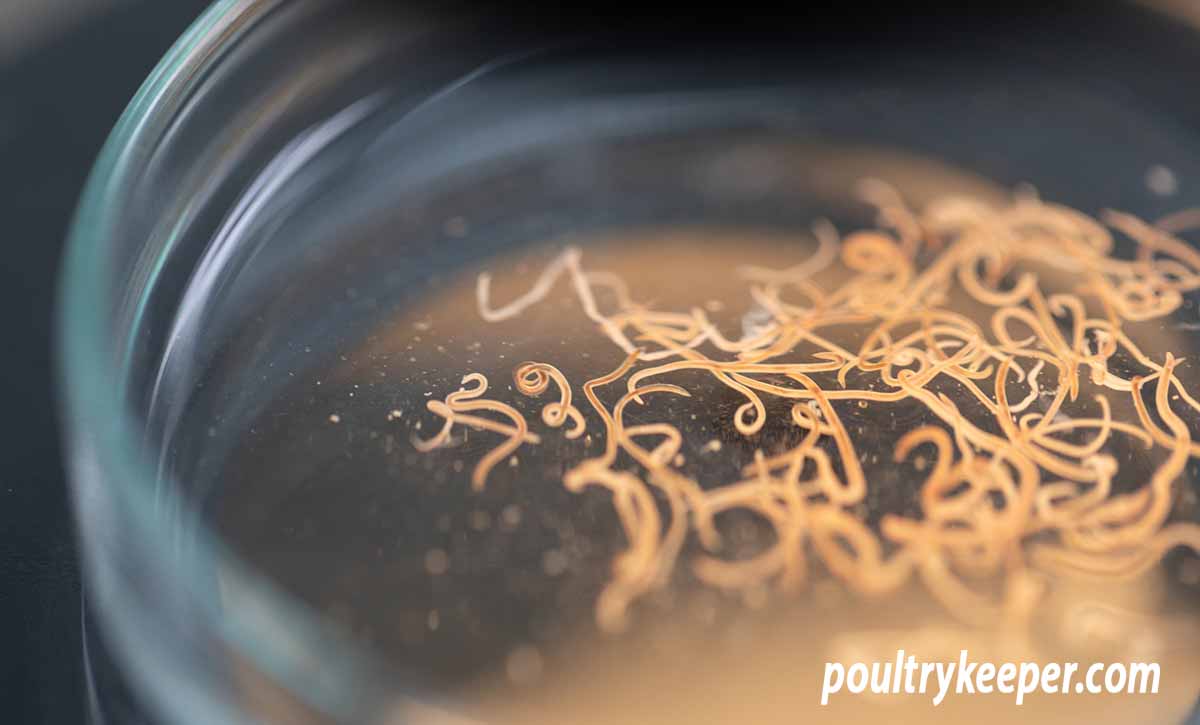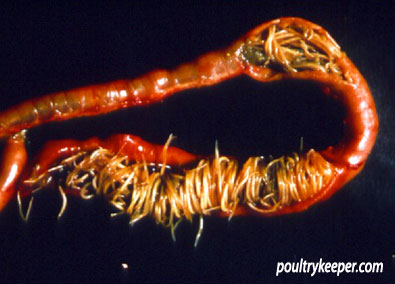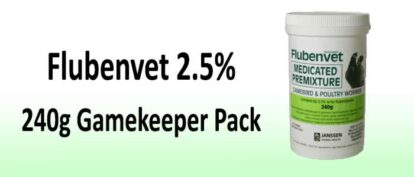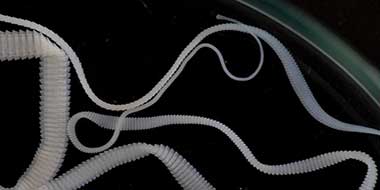
Chicken roundworms or Ascarida Galli worms are 5 to 8cm long and live in the middle part of a bird’s intestine. Bad infestations in poultry usually occur when birds are kept in intensive conditions on dirty litter or in runs that have been used for many years.
Large roundworms, often called chicken roundworms, can be seen with the naked eye. Infestations can occur ‘directly’, that is, by birds eating worm eggs that have been passed out in droppings. These eggs have to be infective, which takes 10 days.
Signs and symptoms of large roundworm
Once eaten, eggs hatch in the bird’s proventriculus and the larvae move on to part of the intestine called the lumen. A week later, the larvae get into the mucosa, part of the intestine wall and start to cause damage.
Occasionally, large roundworms crawl up the oviduct and can appear inside eggs, which is not pleasant at all when you crack an egg open!

Loss of egg production, pale yolk colour and anaemia (look for combs and wattles that are light in colour) are the biggest signs of large roundworm infection. A loss in weight gain for growing birds is also a common sign.
Young birds haven’t acquired much immunity to worms, so it isn’t advisable to raise them on the ground that adult birds have used.
Birds can look depressed, and eventually, if the infestation gets out of control, they can cause a blockage (impaction) in the intestines which usually results in death.
This can be seen in the post-mortem photo. Chicken roundworms block the intestine.

Treatment
As with all internal parasites, many treatments will kill these worms. Worming Chickens provides some ideas for worming poultry.
Flubenvet is a licensed feed wormer that can be used with most poultry.


